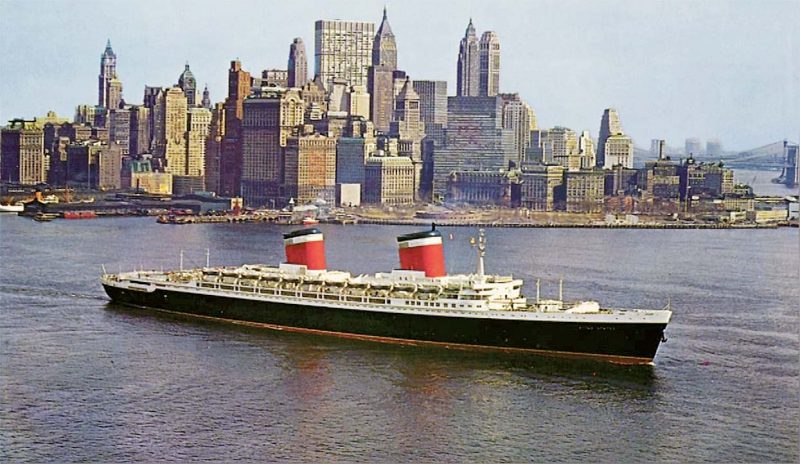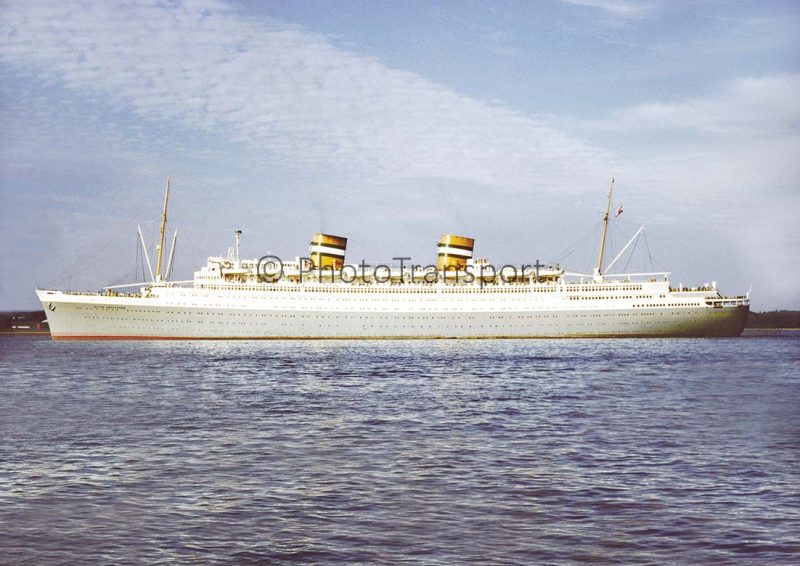
I was deeply sorry to hear that the great American liner, the SS United States, is to be sunk as an artificial reef off the coast of Florida. This iconic vessel, built in 1952 was the fastest liner on the North Atlantic route. On her maiden voyage she averaged 35.59 knots eastbound and 34.51 knots westbound and in doing so, won the Blue Riband of the Atlantic. Her speeds have never been beaten by a Trans-Atlantic liner.
In the 1950s and 1960s there were some beautiful passenger ships. Obviously the two Cunard Queens were very pleasing on the eye as were the P&O-Orient ships sailing to Australasia and the Union-Castle vessels serving South Africa. There were also a number of emigrant ships taking passengers to a new life in Australia.
However, to me, nothing could beat the lovely lines of the Trans-Atlantic liners. Apart from the modern United States there were some other great ships, notably the Rotterdam and in particular the Nieuw Amsterdam of Holland America Line, which was arguably one of the most attractive liners ever built, and the ships of the French Line (CGT). They were operating the Liberte, Antilles, Flandre and Colombie, and from 1962 the France, together with the greatest of them all, the Ile de France whch I was fortunate to watch sail from Southampton in 1957.


Sadly, the advent of the jet aircraft in the late 1950s marked the death knell of these great ships.
What a different world we live in today. With a few exceptions, the modern behemoths are very ugly vessels, albeit being used for a totally different product, ie cruising. What a pity that no-one could come up with the cash to purchase the United States and restore her to her former glory. A great ship like her should be preserved for posterity.
We won’t see her like again.





Comments
Sorry, comments are closed for this item